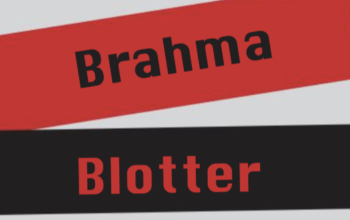High school students throughout California will soon be able to enroll and take community college credit courses from the comfort of their high school campuses, according to Assembly Bill 288. The bill was enacted on Jan. 1, 2016 and was added to the California Education Code Section 7600.
“[The bill is] an expansion on the concurrent enrollment law,” Vice President of Student Services Earic Dixon-Peters said. “It states that it is a dual enrollment focused toward high school students, which allows colleges in the local K-12 systems to enter into an agreement where we can offer college courses on the high school campus.”
According to Dean of Student Services William Mamolejo, the bill has Pierce’s Student Services department working directly with high schools to establish the respective Memorandums of Understanding (MOUs).
“We’re working with all the local schools to create these [MOUs] so that we know. At Birmingham we’re going to offer this pathway, at Grant we’re going to offer this pathway,” Marmolejo said. “And so when all those programs are established, we then have to go out there and execute; my team will do that.”
According to Dixon-Peters, Pierce has one MOU almost complete with Birmingham High School. AB288 classes offer something new that varies from concurrent enrollment or AP classes.
“This is different than our current concurrent enrollment process, [high school satellite classes, which are] college classes at the high school that are open to everyone and anyone,” Dixon-Peters said. “The dual enrollment process must be a career or college pathway program. It must lead to either a transfer program, a certificate, or a vocational degree. AP classes don’t lead you to a career.”
Distance Education Coordinator Wendy Bass said that it seemed to her like there were issues with the bill that weren’t addressed when it was being created, and it’s unfortunate that they’re only being addressed now, after the bill is already in effect. One of the concerns Bass expressed is that high school students aren’t mature enough to take college courses and take full responsibility for their enrollment.
“I’d hate to have [high school students] take a college class too soon and have it leave a really negative emotional impact on them in terms of feeling like they won’t be successful if they try going to college because they couldn’t do it when they were in tenth grade,” Bass said.
Bass, who has a son in college, said that it doesn’t make sense to her that kids are being rushed to finish college today at a younger age than ever.
“It’s not like there are jobs waiting for everyone at 22,” Bass said. “I don’t think the goal should be to get students through college faster, it’s just to get them through successfully.”
Marmolejo said that the goal of the bill is to help high school students who are at risk of dropping out or not being college prepared. The classes can serve dual purposes, helping to spur them toward graduation, as well as earning them college credit. Dixon-Peters added that it provides instructors with a gateway to talk to students about their future.
“The question becomes, “How do I know what I want to do?”” Dixon-Peters said. “That’s why it’s a career pathway, because it allows students to have this conversation. They tell you exactly what to take and when to take it to get your degree.”
Student Recruitment Coordinator Sergio Gonzalez said these classes aren’t meant to replace high school curriculum. The high schools will only be allowed to host college courses alongside 247 minutes of instruction time at a high school level.
Students will still be learning a minimum of four hours of high school material on a daily basis.
Another issue that was raised is how these classes, and all the supplies they include, are going to be funded. Bass mentioned that students have to purchase textbooks in college, but textbooks are provided in high school.
“Birmingham is going to pay for the books so that students don’t have to pay for that either, but that’s a little tricky spot because some high schools don’t have the funding for it and are looking at the college,” Marmolejo said. “We don’t necessarily have extra money to pay for these books, so right now we’re trying to figure it out. Nothing’s going to come out of our pocket. We’re going to receive funding from the state to teach these classes, so that’s good.”
Dixon-Peters said that he thinks most of the concerns about the bill’s enactment come from the fact that it’s a new program and there are some logistical aspects to it that need to be resolved. But Dixon-Peters said that it’s no different from any other new plan, and it’s something every college up and down the state is working on.
“I don’t think anyone disagrees with increasing our success rates from high school students and in college, and I think [AB288] will do both,” Dixon-Peters said.
According to Marmolejo, Birmingham High School is way ahead of other high schools, so Pierce will be ready to offer classes there in less than a year from now.
“If we can get on board with some of these other schools, we may be partnering with them as early as fall 2017,” Marmolejo said, “But most likely it’ll be for the following year.”



